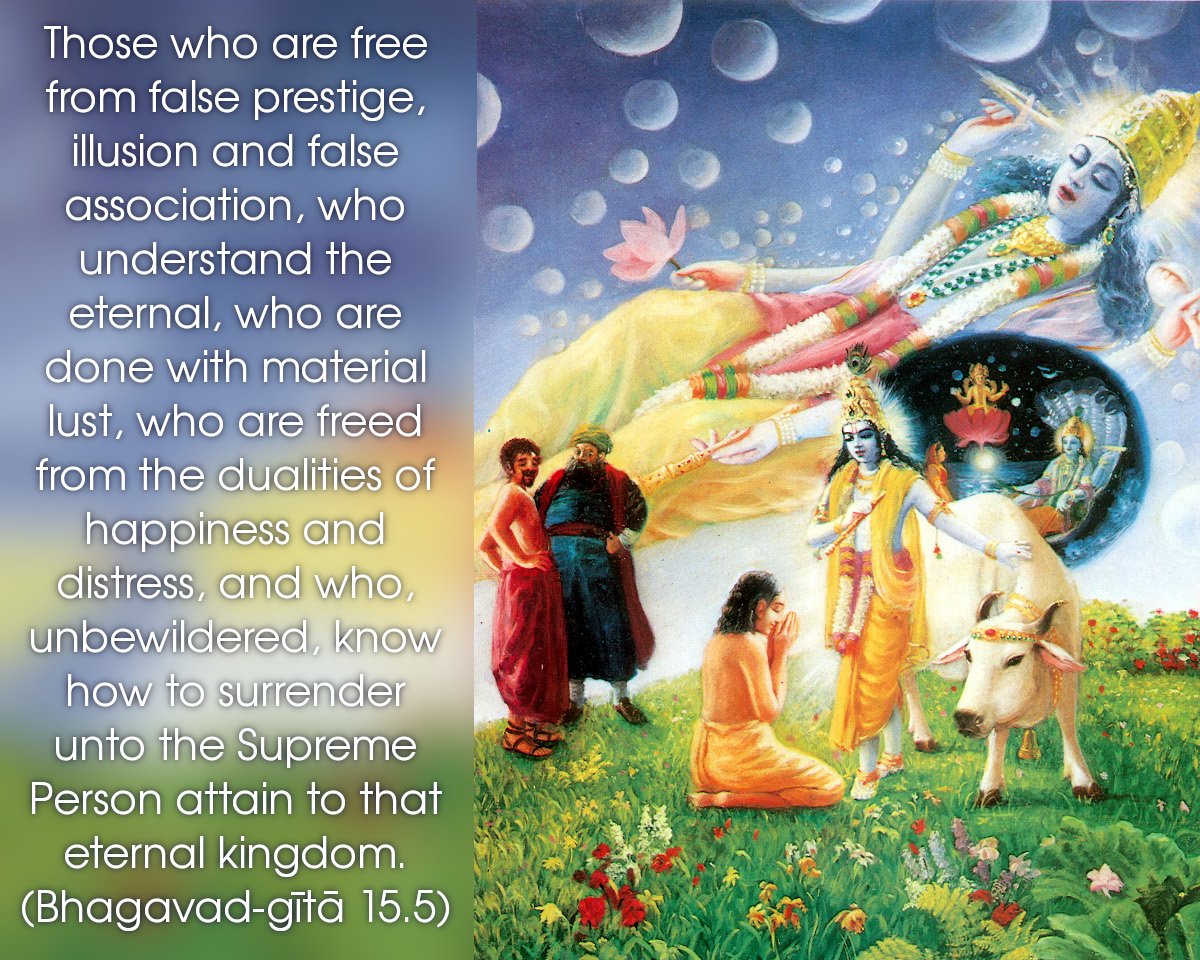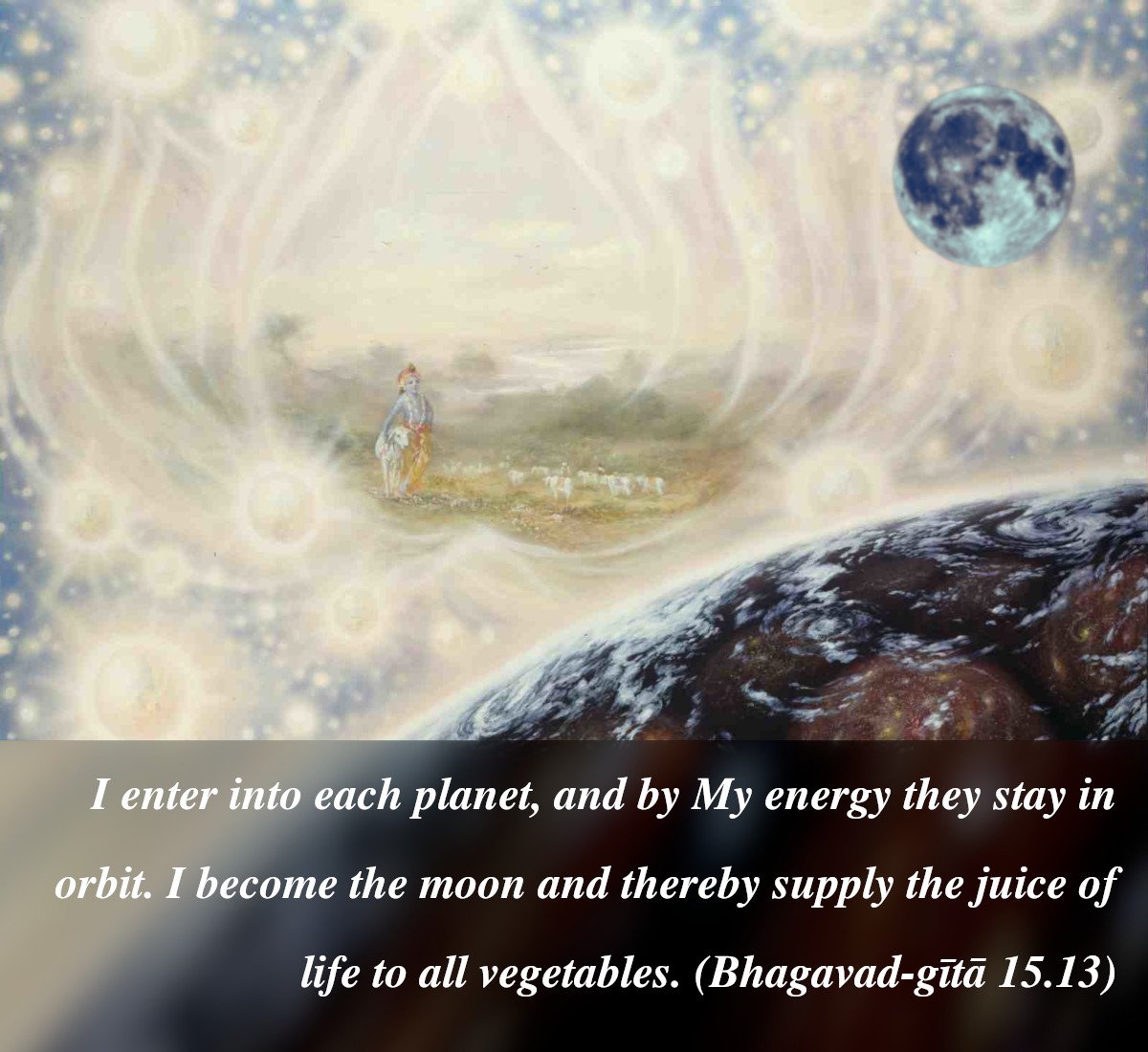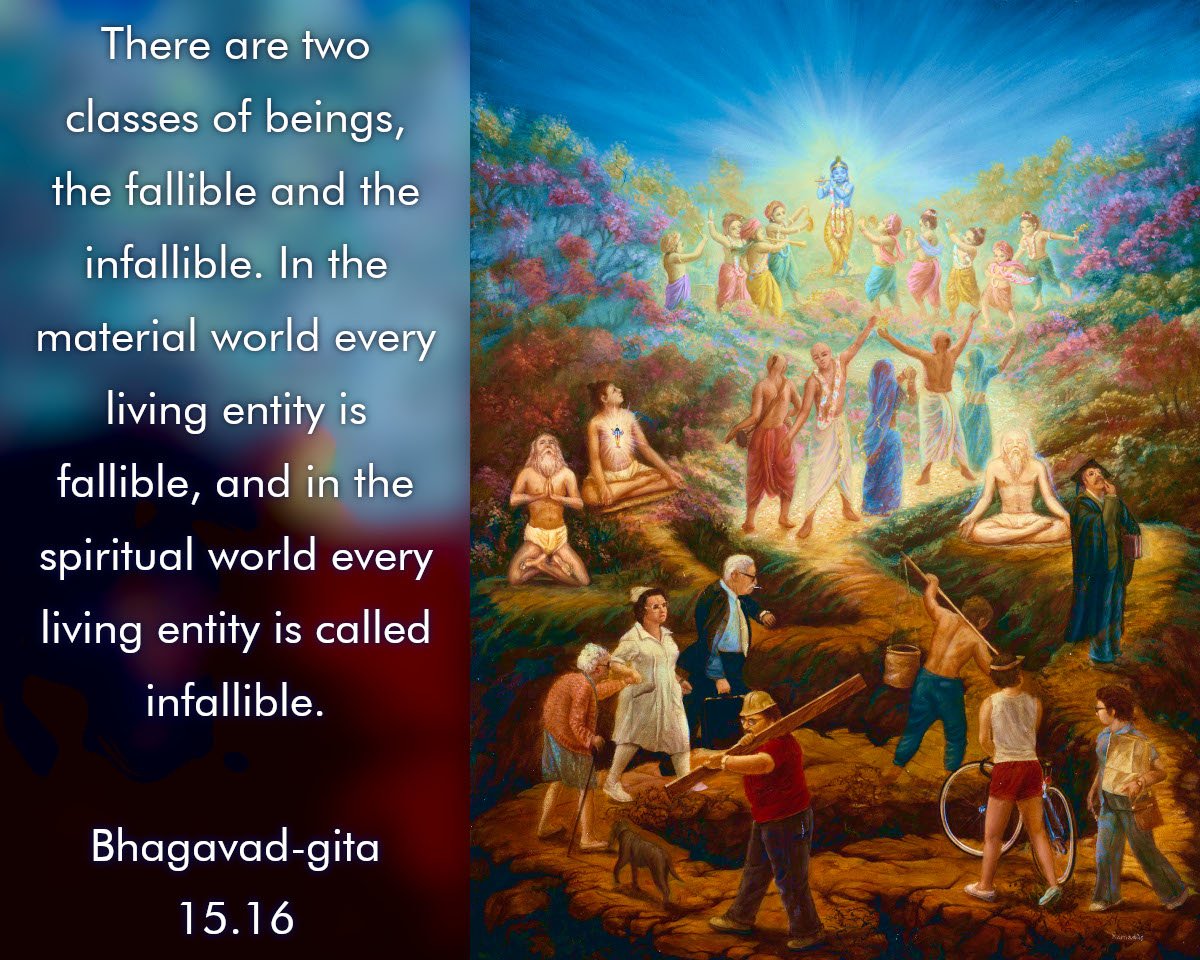The Bhagavad Gita Chapter 15 delves into profound concepts that unravel the nature of the Supreme Person, the interplay of two natures, the symbolism of the divine tree of life, and the path to liberation. This chapter offers a transformative journey that invites us to recognize the divine within and embark on a path of spiritual evolution.
The chapter presents Krishna as the Supreme Person, Purushottama, whose supremacy manifests in every aspect of creation. It explores the duality of prakriti and purusha, the material and spiritual natures, and their intricate dance that shapes the material world.
The Supreme Person

In Chapter 15 of the Bhagavad Gita, Krishna unveils the concept of Purushottama, the Supreme Person. Purushottama represents the ultimate and complete manifestation of divine consciousness, the source and sustainer of all existence. Recognizing the Supreme Person within oneself is the ultimate goal of spiritual evolution, leading to liberation and the attainment of the highest spiritual truth.
Krishna’s Supremacy
Throughout Chapter 15, Krishna demonstrates his supremacy in various ways. He reveals his cosmic form, the Vishvarupa, to Arjuna, showcasing the vastness and magnificence of his divine nature. He declares himself as the ultimate controller of all beings, the origin and end of everything that exists. Krishna also emphasizes the importance of surrendering to his divine will, as the path to liberation and the realization of the Supreme Self.
Implications of Recognizing the Supreme Person, Bhagavad gita chapter 15
Recognizing the Supreme Person within oneself has profound implications for our spiritual journey. It leads to a profound understanding of our true nature as divine beings, connected to the source of all existence. This realization empowers us to transcend our limitations, develop compassion for all living beings, and live a life of purpose and fulfillment. By aligning ourselves with the Supreme Person, we open ourselves to the infinite possibilities of spiritual growth and the attainment of ultimate bliss.
The Two Natures

In the realm of existence, two fundamental natures govern all creation: prakriti and purusha. These distinct principles play intricate roles in shaping the material world and our experience within it.
Bhagavad Gita Chapter 15 emphasizes the significance of detachment and devotion. It teaches us to let go of our attachments and focus on the divine within. Like in Operation True Love Chapter 1 , where the protagonist embarks on a journey of self-discovery, Chapter 15 of the Bhagavad Gita guides us towards a deeper understanding of our true nature.
It reminds us that by letting go of our ego and desires, we can find true peace and fulfillment.
Prakriti, the material nature, is the ever-changing, dynamic aspect of existence. It encompasses the physical elements, energies, and forces that constitute the universe. Prakriti is characterized by its three modes or gunas: sattva (goodness), rajas (passion), and tamas (ignorance). These modes govern the qualities and tendencies of all material phenomena.
The Bhagavad Gita Chapter 15 describes the path to self-realization and liberation, emphasizing the importance of transcending material desires. If you’re a fan of the popular manga and anime series “Yamada-kun and the Seven Witches,” you might appreciate a similar theme in loving yamada at lv999 chapter 69 . In this chapter, the protagonist, Yamada, grapples with his growing love for his classmate, Shiraishi, while struggling to control his supernatural powers.
Like the Bhagavad Gita, this chapter explores the complexities of human emotions and the pursuit of a higher purpose.
Purusha
In contrast to prakriti, purusha is the eternal, unchanging aspect of existence. It represents the conscious, observing self, the witness within. Purusha is beyond the limitations of the material world and remains unaffected by its fluctuations. It is the source of pure consciousness and the driving force behind all creation.
Interaction of the Two Natures
The interaction between prakriti and purusha manifests in the material world as the interplay of consciousness and matter. The gunas of prakriti influence the nature of our experiences, while purusha provides the awareness and capacity for discernment. This interplay gives rise to the myriad forms and phenomena we observe in the universe.
Bhagavad Gita Chapter 15 is a journey through the world of the soul, where the soul is likened to a charioteer, and the mind and senses are likened to the horses. This chapter teaches us to control our mind and senses, so that we can reach our true potential.
Like the Spy x Family Chapter 91 spy x family chapter 91 , where the family learns to work together, Bhagavad Gita Chapter 15 teaches us the importance of self-control and discipline, so that we can achieve our goals and live a fulfilling life.
The Divine Tree of Life: Bhagavad Gita Chapter 15

The Ashvattha tree, also known as the Bodhi tree, is a revered symbol in Hindu scriptures. In the Bhagavad Gita, Chapter 15, Lord Krishna describes the universe as a gigantic Ashvattha tree with its roots above and branches below. This imagery encapsulates the cyclical nature of existence and the journey of the soul towards enlightenment.
The Tree’s Symbolism
- Roots Above: The roots of the tree represent the subtle, unseen realm of the Supreme Person. From this source, all creation manifests.
- Branches Below: The branches of the tree symbolize the material world, with its countless manifestations and desires. Souls descend into this realm through repeated births.
- Leaves: The leaves of the tree represent the ephemeral nature of material existence. They flutter and fall, symbolizing the impermanence of all things.
The Soul’s Journey
The soul’s journey through the tree is a metaphorical representation of its evolution. Souls descend through the branches of material existence, experiencing the fruits of their actions. Through spiritual practices, they gradually ascend towards the roots, seeking liberation from the cycle of birth and death.
The Supreme Person
The Supreme Person, Krishna, is described as the root and support of the Ashvattha tree. He is the ultimate source of all existence and the ultimate goal of all spiritual seekers. By surrendering to Krishna, the soul can break free from the illusion of material existence and attain true enlightenment.
The Process of Liberation

The path to liberation is laid out in Chapter 15 of the Bhagavad Gita. It involves a series of steps, beginning with the cultivation of detachment and the performance of selfless actions.
Surrender
Surrender is a key element in the liberation process. It involves letting go of the ego and surrendering to the divine. This means giving up the illusion of control and accepting the will of the universe. By surrendering, one opens themselves up to the grace and guidance of the divine.
Devotion
Devotion is another important aspect of the liberation process. It involves developing a deep love and connection with the divine. This love is expressed through prayer, meditation, and service to others. By cultivating devotion, one strengthens their connection to the divine and aligns themselves with the path of liberation.
Knowledge
Knowledge is also essential for liberation. This knowledge includes understanding the nature of the self, the world, and the divine. By gaining knowledge, one can dispel the illusions that bind them to the material world and realize their true nature.
The Liberated State
The liberated state is one of freedom and joy. It is a state in which one is no longer bound by the limitations of the material world. The liberated soul is free from suffering, fear, and desire. They experience a deep sense of peace and contentment, and they are able to live in harmony with the universe.
Ending Remarks

Chapter 15 concludes with a profound message of liberation. It emphasizes the importance of surrender, devotion, and knowledge in breaking free from the cycle of material existence. The liberated state, characterized by transcendence and inner peace, is the ultimate goal of the spiritual seeker.